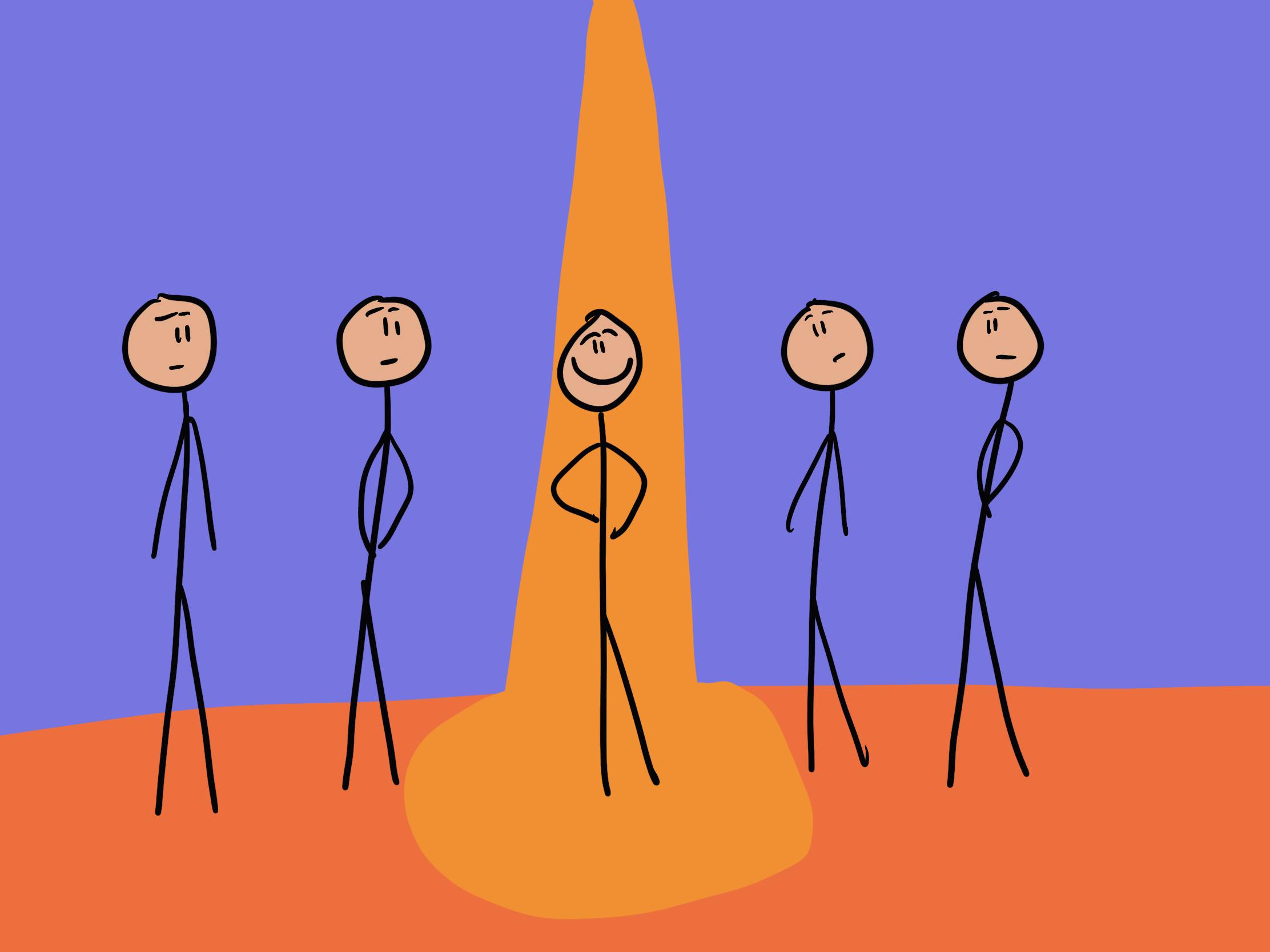Why do we feel like we stand out more than we really do?
Spotlight Effect
, explained.What is the Spotlight Effect?
The spotlight effect describes how people tend to believe that others are paying more attention to them than they actually are—in other words, our tendency to always feel like we are “in the spotlight.” This bias shows up frequently in our day-to-day lives, both in positive situations (like when we nail a presentation and overestimate how impressed all our co-workers must be) and in negative ones (like when we bomb the presentation and feel like everybody must be laughing about it behind our backs).

Where this bias occurs
Let’s say you go to a party at your friend’s house, and you end up spilling some of your drink on your shirt. As you make your way to the bathroom to clean yourself up, you feel like everybody at the party is watching you make a fool of yourself, and you’re incredibly embarrassed. However, a few weeks after the party, when you bring it up with your friends, nobody else even remembers the incident. Even though you felt like the center of attention at the time, you really weren’t. Everyone else was too busy worrying about how they were being scrutinized—perhaps cringing over an awkward comment they made to a friend, regretting the bold shirt they chose to wear, or wondering if they were snacking too much. We’re all walking around in our little spotlights, which’re, most of the time, only visible to us.














